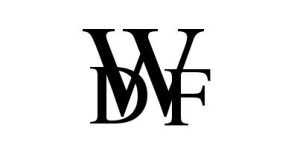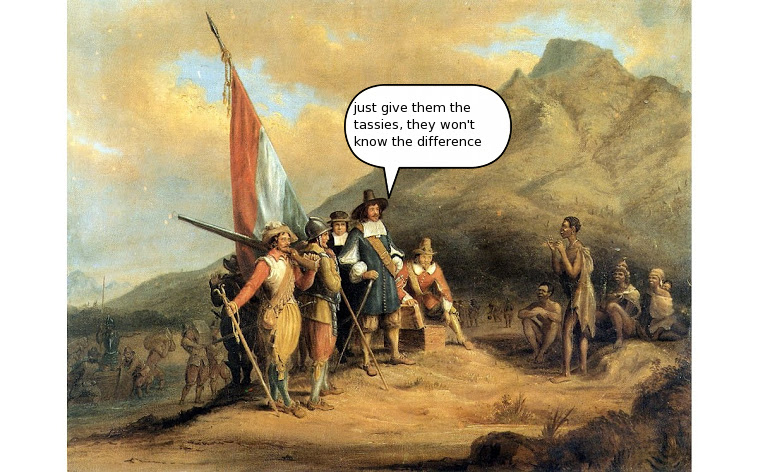It made a dull thwack. A thwack, full of bewilderment, confusion and wonder. It was the sound of my palm hitting my forehead.
The thwack occurred shortly after reading a Christian Eedes blog post on the newly launched Cape Vintner Classification, and seeing that they had chosen to reference the Vereenigde Oost-Indische Compagnie, or VOC in their logo.
In return for membership fees and box ticking capabilities, wine producers will be allowed to place the CVC logo on their bottles. This logo will supposedly signify, high-quality, environmentally friendly, ethically made wines.
You can find out more about the boxes that need to be ticked, and the rest of the project on the CVC website (which, by the way, is excellent).
This is all well and good. Countries like Germany have something similar, and these sorts of classifications have their place if run and managed properly. What bothers me is the logo. Christian writes:
A key element of the whole exercise is a logo (designed by Anthony Lane and referencing the VOC logo of the Dutch East India Company) which members can add to their wine labels
Here, look at it.
And the original:
And here is my own, a logo for my disbelief

I will not question the business savvy of Johann Rupert (the man behind the CVC), who has done rather well for himself, but I will question their choice of logo design. Before it has even had the chance to signify quality, it shouts about oppression, segregation, and colonial rule. It also speaks to our industry’s inability to transform, and come to terms with an ugly, and violent history.
While my bachelor of arts degree may not have given me the business know-how of Mr. Rupert, it did give me a solid enough grounding in semiotics to know that referencing the VOC is extremely problematic, offensive, and down right backward.
The CVC wants the connection to the VOC to be about the first vines brought out by Jan Van Riebeek, and that most hallowed date in the SA wine industry, the 2nd of February 1659 when wine was first made at the Cape. But you cannot control language and signs that easily.
By aligning yourself with this historic and enormous Dutch corporation, you align yourself with the first racial segregation in South Africa; you wash your brand in years of slavery, violence, and the illegal appropriation of land.
Only one year after wine was first made in the Cape, the first racial division took place here. In 1660 Jan Van Riebeek’s Hedge was planted to separate the Khoi from the Dutch settlers. This began a history of racial divides that would persist for almost all of those 350 years of winemaking the Cape Vintner Classification so proudly champions.
The CVC wants its logo to denote quality – which it might just do – but its connotation will be the tale of our colonial past, and a worrisome narrative that pays homage to European settlers while too comfortably ignoring the oppression, thievery, and racism they brought with.
South Africa’s history might go back to the times of the VOC, but as a free, non-racial, democratic country it goes back to 1994. Why does the Cape Vintner Classification need to reinforce our Dutch heritage? It seems to me the logo says “don’t worry, we are African, but not that African.”
The logo’s narrative is more complex than just a problematic hat-tip to our colonial past, it speaks of how our industry sees itself today. The South African wine industry has not been able to transform adequately in the last 20 years. It is still majority white owned, tastings I attend are almost exclusively white, and winemakers too are mainly white men. Within the industry it is an uncomfortable topic and, I think, generally ignored.
The end goal of the Cape Vintner Classification is surely to become THE stamp of quality for South African wine. So when you see the CVC sticker on a bottle you know it’s top stuff. This being the case, to choose a logo that speaks to our Dutch past, to a time and culture completely divorced from the country we live in today is a problem. To reinforce the Dutch, and thus Afrikaans, heritage of our wine industry and align this with top quality, creates an inherently dishonest narrative. The brave white settlers arriving on the dark continent and while heroically taming the savages manage to make wine. “Jolly good old chap, just what this place needed, a damn good bit of culture.”
What of the thousands of workers who toiled in the vineyards for nothing more than a bit of wine? Nope, quality has nought to do with them, quality is derived from the white explorers and colonialists. To replay this tired and selective narrative in 2013 is not good enough. This logo shows the difficulty our industry has in positioning itself in our country’s history. It is complex, and it is difficult. Wine making in inextricably linked to past wrongs, but we should be working toward something better, not holding on to a past that serves only a few.
It is similar to the Cape Fortified producers’ inability to move away from using the word ‘Port’. There is an unhealthy, fawning connection to Europe which white South Africans, I think, do not see as problematic. We hold on to a history that serves a minority. A history we need to engage with and tell truthfully. A new, local word for port, and a logo that denotes quality, while also connoting a unified, transformed, and new South Africa.



Well said.
Round, round, baby right round…it seems like the theme for next year is going to be”Conservative and Proud” . One can hardly call the business acumen of Mr Rupert into question, however, the historical connection attached to the logo does raise the issue of how well it was thought through.
As an Afrikaans dude it pains me that I will forever be associated with an era of oppression and segregation, regardless of the fact that I was still a proverbial “swimmer” when all of those atrocities took place. Then comes a long a subtle reminder like this to the rest of the world, who’s perceptions we are trying to change about white South-Africans and our wine/country in general, and this makes it even harder to do so.
Looking at the founders of the CVC, there are several common denominators: white, middle-aged and very Afrikaans (with maybe the exception of Mr. Tooth). Not only that, but all very respected winegrowers and business men. Thus, they represent the era of whose baggage young people today are still trying to get rid of, and reminding the world about our past does not make it any easier.
Bottom-line: good idea/initiative, but sullied by the negative associations that can be made by their throw-back logo.
Maybe SA wine should take a feather out of the Mother City Queer Project’s hat and be more like “Space Cowboys” to break this dull and trudging conservative mould (of which I am truly gatvol).
http://mcqp.co.za/spacecowboys2013/home
Hi Harry,
While I do not choose to comment on your specific short-comings of the CVC, I would like to add a general and personal thought:
I applaud & support any effort to raise the profile of the top South African wines. Those that attended the CVC launch will know that the convenors openly and honestly communicated that this organisation is a ‘work in progress’ and will evolve over time. While there is already a tiny minority who have vocally made their opposition and negativity clear, there are a lot of well grounded, established and serious players with ‘skin in the game’ who have debated this initiative and are throwing their support behind it. The supporters understand the vagaries of the market, have a considerable amount of global experience and are convinced by the merits of CVC and will play a positive role in evolving this endeavour. In order to succeed, CVC needs to be a ‘living’ and agile organisation with a need to improve built into it’s DNA.
I would urge CVC and it’s future members to listen carefully to comments both negative and positive so that a conceptual evoloution can commence with immediate effect.
I would urge commentators and role-players alike to continue to voice their comments and concerns, but in an open, polite, transparent and constructive manner in order that our industry can continue this process of forming a united front.
Historically, the South African wine industry has often been instrumental in creating it’s own problems. In-fighting is not an option at this time as we strive for increased global recognition for our top wines. In my humble opinion, we should all take a step back as we assess the positives that could (and should) come to the fore – over time. Perhaps there is something significant we can leave for future generations?
Mike Ratcliffe
PS I am not entirely happy with all the provisions of the CVC founding document. As you know, I am an owner of a winery called Vilafonté that presumably does not ‘qualify’ as a CVC member. I will take it upon my self to understand this and raise this as an issue if I feel that it is important to me.